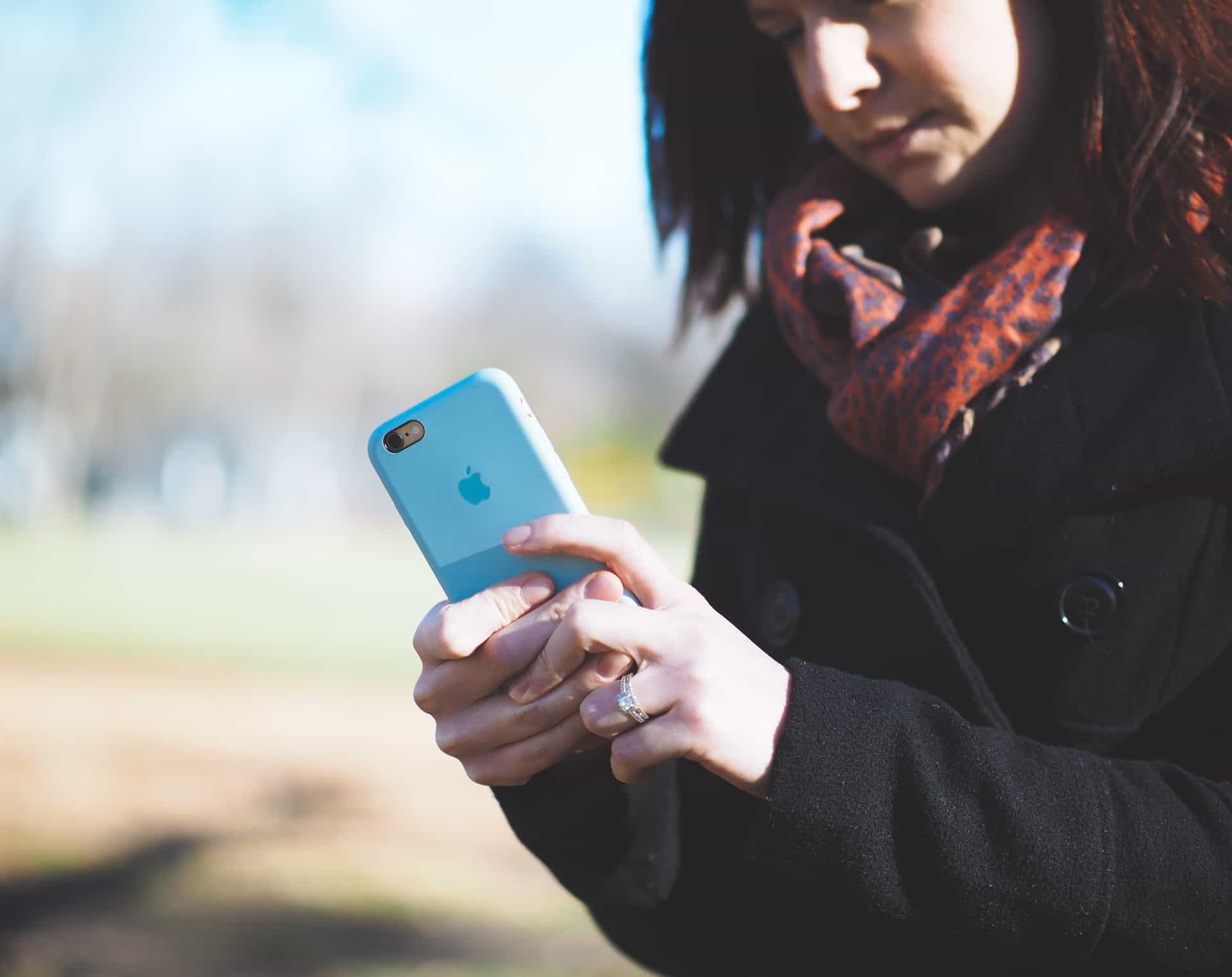
Our favorite iPhone 6s case
iPhone 6s Silicone Case
iPhone cases: You either can’t live with them or you can’t live without them.
For the longest time, I was one of those people in the first camp. I’ve always despised iPhone cases. Loathed them, even. I don’t minded wallet-equipped iPhone sleeves because I can take the phone out of them with relative ease when I get home at the end of the day, and sleeves let you use a naked iPhone 100% of the time.
To me, cases have always been in the way, obstructing the unparalleled design efforts of Cupertino’s monolithic computer company. The iPhone on its own is a beautiful phone, so why hide it behind an unsightly case?
As it turns out, the only good case I’ve found — in fact, the only case I enjoy using — is made for the iPhone.
The Landscape
As big as the market is for smartphones, one could argue the market for smartphone cases is even larger. The race to launch the first case for the latest iPhone model usually begins many months before a new iPhone is announced. There are big dollars at play for case manufacturers, and as a result, there are hundreds of iPhone cases to choose from.
Choosing from those hundreds of options comes down to your lifestyle and preferences. First and foremost, how do you treat your devices? Do you drop your phone a lot, or do you take the utmost care in how you handle your phone? Do you sit in an office all day with your phone laying on the desk, or do you work in construction through the hot, cold, rain, sleet, and snow? How you answer these questions will help determine what you value in an iPhone case.
Attempting to answer these questions for you is a bit more problematic. I spend my entire day at an office desk, as do the majority of the people I know. What I value in an iPhone case will surely differ from what you value in an iPhone case. I value form more than function, a slim profile more than bulky protectiveness, and fashion more than subtlety. I also value a case’s ability to be removed when I’m tired of it. After all, you can only subdue your iPhone’s beauty for so long.
Aspects like the case’s material define its ability or inability to stay clean and free of everyday smudges. How easy a case is to install must also be considered — if you have to use a screwdriver to install the case, a mistake has been made.
The long and short is simple: A good iPhone case in my book has to look and feel good, has to protect your iPhone from casual (not necessarily major) bumps and bruises, and has to be fairly easy to install and remove. A good price is just the icing on the cake.
Our Favorite iPhone 6s Case: Apple Silicone Case

Of all the cases we put to the test, Apple’s own Silicone Case provided the best combination of form, function, and ease of use. The silicone is one of the best feeling silicones I’ve ever felt and the case’s colors are funky, fun, and non-obnoxious. Apple’s Silicone Case is thin and adds very little bulk to the iPhone’s svelte design, and it keeps your iPhone protected from the simple drops and falls of everyday life. Better yet, the Silicone Case’s price is middle-of-the-road at $35, so you should still have some cash left over to purchase the best iOS apps from the App Store.
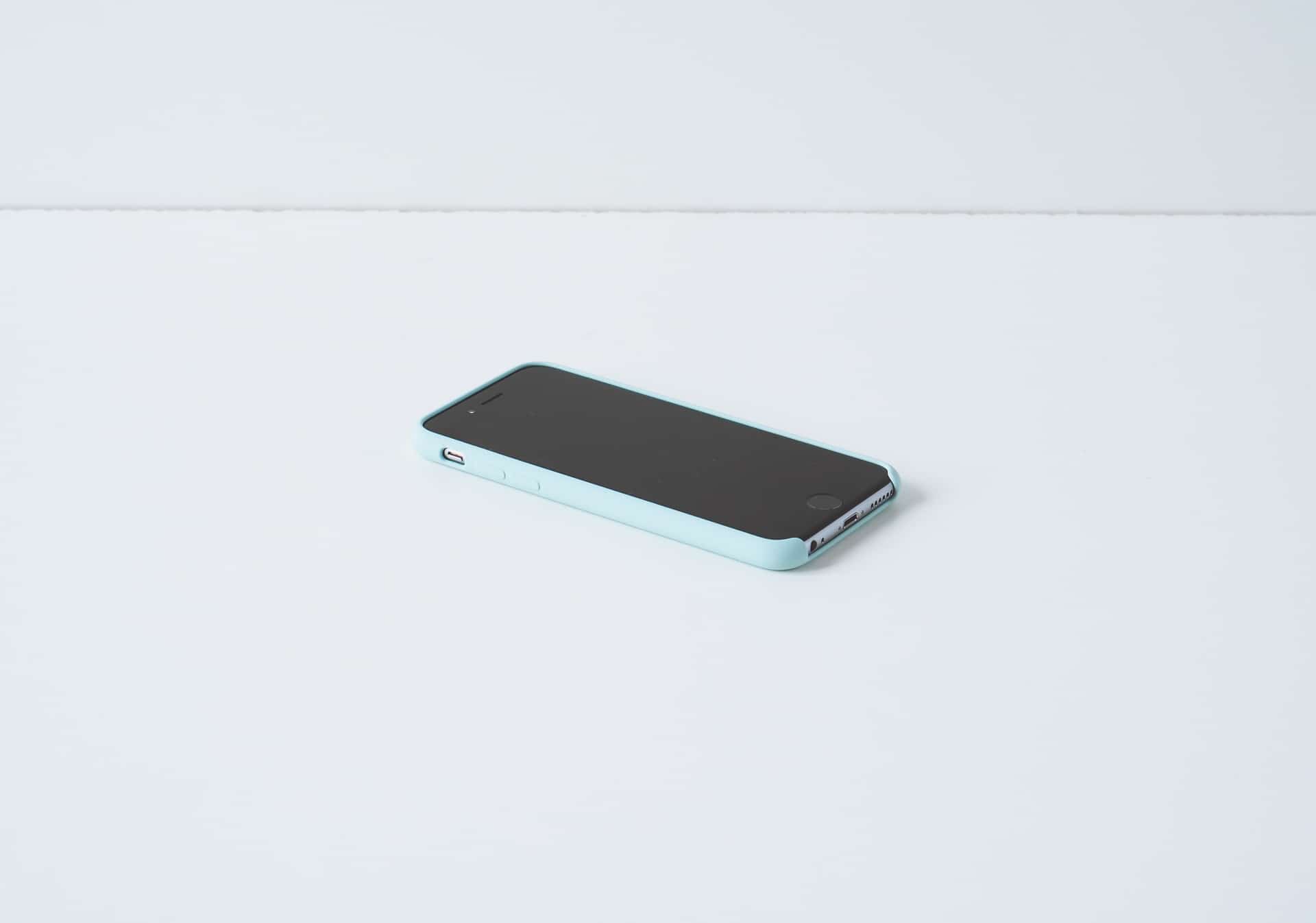
What you see is what you get with Apple’s Silicone Case. The case is only the bare minimum, save for a cutout to access the Ring/Silent switch, a few button bumps, and a cutout for the camera. In fact, the Silicone Case nicely offsets the iPhone’s camera bump and allows your iPhone to rest evenly on the table. The bottom of the case is entirely cut out, leaving room for the iPhone’s speaker, Lightning port, and headphone jack. Aside from these departures, only a simple Apple logo rests on the case back. This case is a lesson in minimalism.
The inside of the Silicone Case has a soft microfiber lining, preventing the 7000 Series iPhone aluminum from directly rubbing against the silicone. It’s a small detail considering it’s the inside of the case, but this helps keep tiny grains of sand or dirt from scratching between the aluminum and the rubber.
What makes the Silicone Case our favorite iPhone 6s case is its ability to act as though it’s not there, yet still provide a dash of spunk and style to your iPhone. The case’s button grooves click with ease and don’t feel mushy, and the cutout to get at the Ring/Silent switch is well-placed. The case is thin and unobtrusive and provides the right amount of protection, and it feels great in the hand.

There are two possible areas for improvement in my opinion — the first being the silicone’s ability to slide nicely out of your pocket. Especially when it’s dry, the silicone has a knack for grabbing onto the inside of your pocket. It’s a small gripe considering the characteristics of silicone in general, but it does get in the way occasionally. Secondly, removing the Silicone Case can be testy at times. Apple’s cases always fit very snugly to the iPhone, so removing them can be tricky. Of the cases on this list, the Silicone Case is the second easiest to remove, but that’s not to say it’s easy.
Overall, we think this is the best iPhone 6s case for most people. Apple’s Silicone Case looks fresh, feels top-notch, and comes in at a simple $35. That’s a well-rounded case right there.
The Step-Up: Apple Leather Case

If you’re looking for a more classy option and are willing to accept mushy button presses and a ballooned price, Apple’s Leather Case is a great step up from the Silicone Case.
Apple’s Leather Case comes in a range of five colors: Midnight Blue, Saddle Brown, Rose Gray, Brown, and Black. New to the lineup is the Saddle Brown color, which is my personal favorite. I believe the Saddle Brown Leather Case is the best looking case we tested, especially when installed on a Space Grey iPhone. In my opinion, white-faced iPhones take to cases in a more aesthetically pleasing manner, so finding a stylish case for a black-faced iPhone without going black-on-black can be difficult. Luckily, Saddle Brown looks pristine on the Space Grey iPhone 6s.

Aside from price and those mushy buttons, Apple’s Leather Case is largely the same as the silicone variety. The case is thin and light and doesn’t add much bulk to the iPhone. It feels premium in the hand and has the same interior microfiber lining as the Silicone Case. Best of all, the leather is sure to accumulate some scratches and bruises along the way — the keys to a beautiful leather product.
The Leather Case’s mushy buttons are a bummer, though. Pressing the sleep/wake button on the right side of the iPhone can be unnoticeable, and this is exacerbated on the left side where it’s nearly impossible to tell if you’re hitting the volume up or volume down button.

And lastly, the Leather Case’s price. It’s a tad steep if you ask me, especially when foreign exchange comes into effect. In Canada for instance, these leather cases come in at $60. Although not exorbitant, it’s not cheap either. I love the way the leather feels and ages over time, but I’m left wondering if Apple’s Leather Case is priced on the high side.
For $45, the Apple Leather Case is a classy step up from the Silicone Case in terms of feel and style, but the Silicone Case takes the cake in terms of price, function, and general spunkiness.
Alternatives
Just because we prefer Apple’s iPhone cases doesn’t mean there aren’t other great choices out there. Here are a few others we tested.
The Best “Super Slim” Case: Caudabe Skin Case
The Caudabe Skin Case is basically exactly that: A tight fitting, super thin case to keep the shape of your iPhone undistorted and to offer just enough protection to keep your phone scratch-free. It’s the best super-thin case we’ve tried.
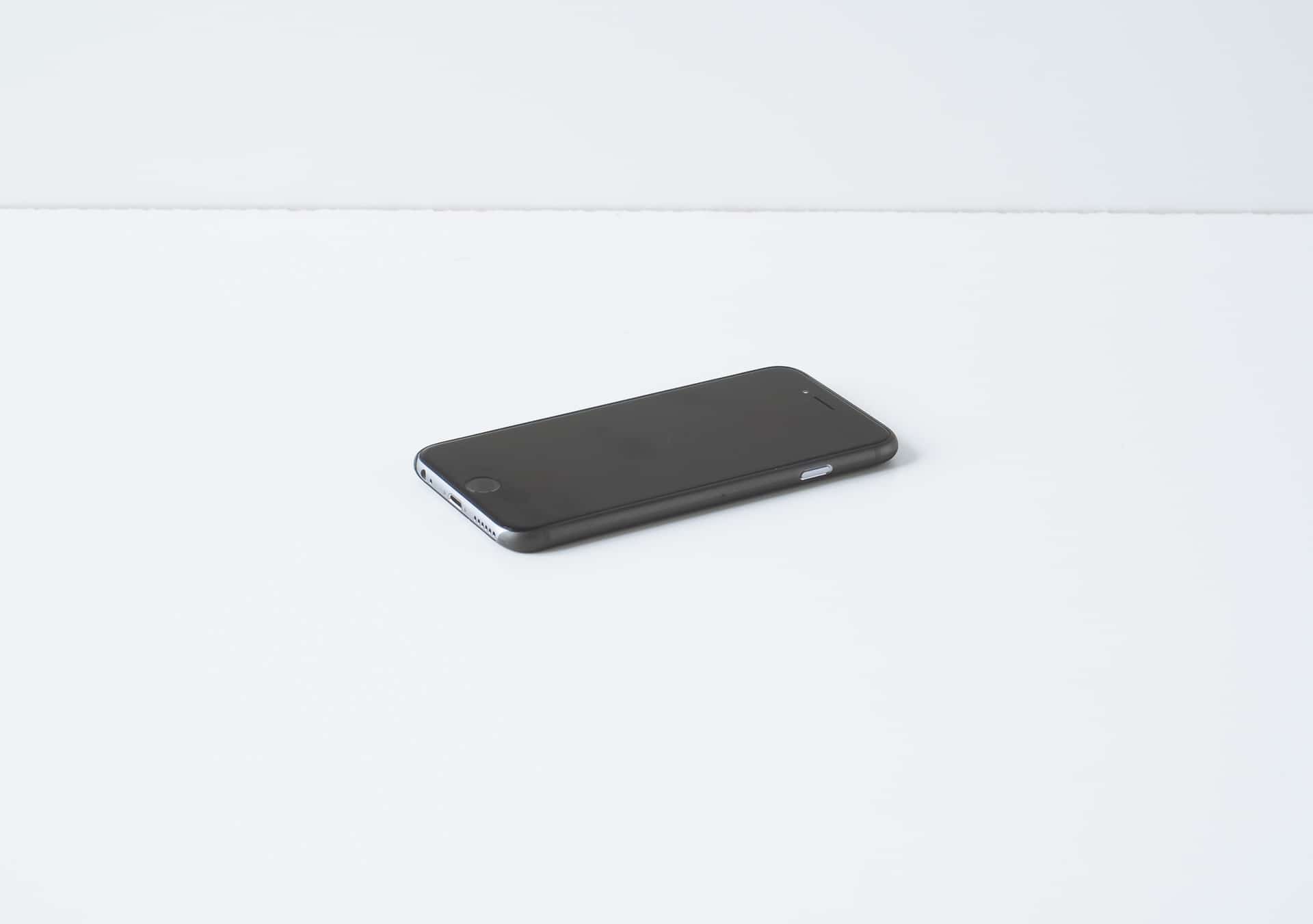
There is a nice bump around the camera cutout to allow your iPhone to lay flat on a table. There are also button cutouts for all the iPhone’s buttons as well as the Ring/Silent switch, meaning there is no impact on button presses when using this case.
The other nice feature of the Caudabe Skin Case is the added grip it gives your iPhone — the iPhone 6 was known for how slippery it was, and although the 7000 Series aluminum is a bit grippier, the added friction provides just enough grip to give you that extra sense of security.

But the Skin Case being a skin-tight case means it doesn’t provide much protection against everyday bumps. Even during my testing time, the Caudabe case picked up scratches and bumps, something none of the other cases acquired.
Further, the case is a bit unimaginative. The case is so thin, it’s translucent and doesn’t give way to much aesthetic excitement.
Luckily, the thin skin means there aren’t many materials used to produce the Caudabe Skin Case, making it one of the least expensive options on this list. At a mere $15, this may be a no-brainer installation as soon as you crack open your iPhone box.
The Caudabe Skin Case provides just enough protection and enough grip to take away the everyday bumps your iPhone will incur, but between its relative lack of protection and its unexciting appearance, I’m left leaning toward the Apple Silicone Case.
Maxboost iPhone 6s Case
The Maxboost DuraSlim iPhone 6s Case is a neat addition to this list and provides some impressive protection for the price. The case consists of a rubber/soft plastic outer ring (á la iPhone 4/4s Apple Bumper) that sits inside a hard plastic chassis. I felt like it was a less expensive Otterbox Commuter when installing the case, and I’d wager it provides most of the benefits of the protective Commuter without the cost.

There are a few design decisions for the Maxboost case that cause me to scratch my head. First is the hard plastic covering for the Lightning port, but the lack of covering for the headphone jack. I may see the reasoning through the forest, as headphone jacks need to be more quickly accessible than the Lightning port. But the decision looks a bit odd — why one port and not the other?
The rubber “bumper” also covers up the speaker on the bottom of the iPhone, but provides front-facing cutouts to fire sound toward the user. This is smart, but it feels like a superfluous decision. Not many people complain about a down-firing speaker, so I don’t understand why Maxboost would muck up the front-facing design of the case.
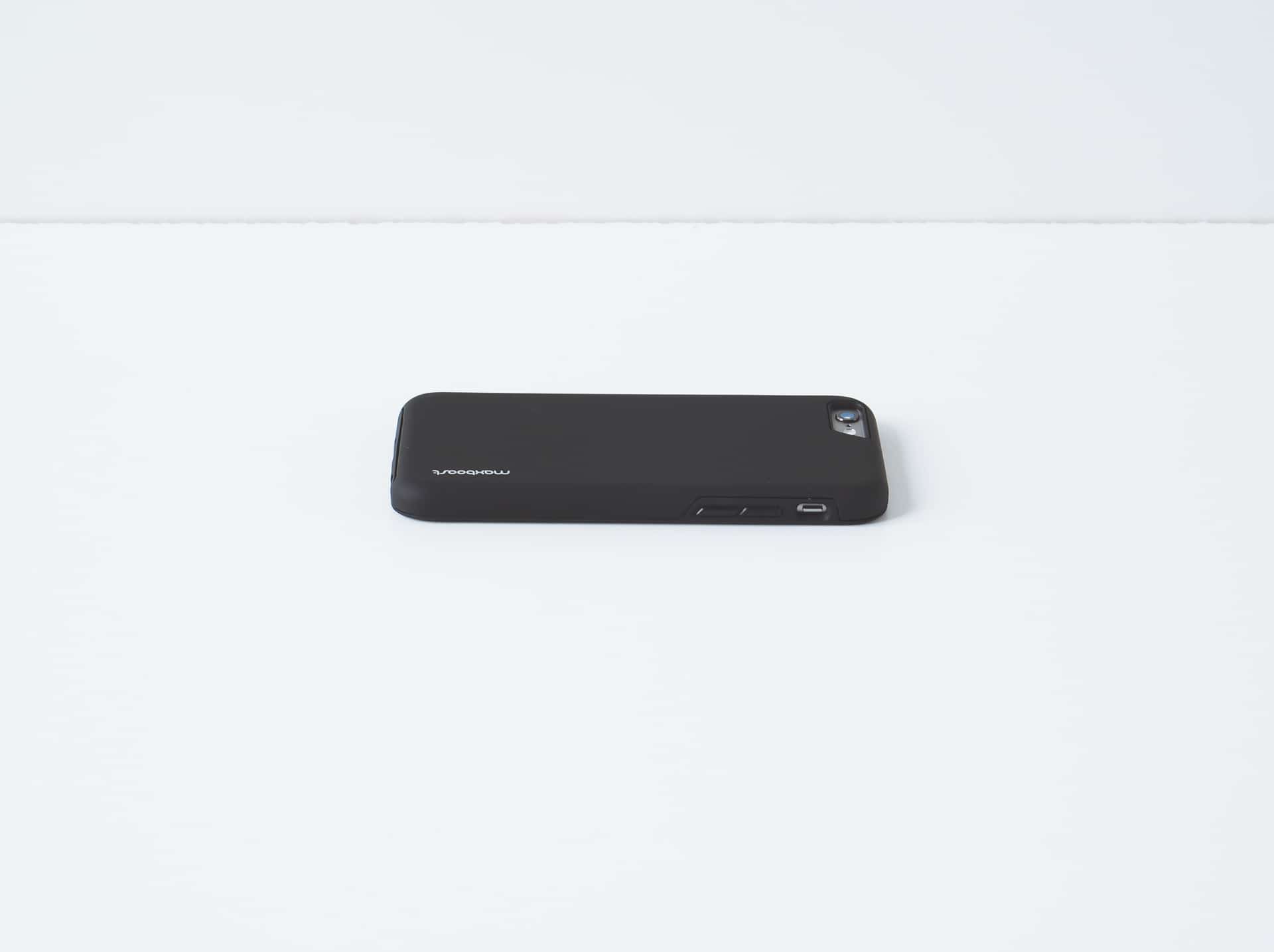
Lastly, the rubber “bumper” provides a fairly large lip on the outer edge of the iPhone, which causes some annoyance when trying to swipe from the side of the screen. It also makes accessing the Ring/Silent switch that much more difficult. The Maxboost lip protrudes farther than any other case on this list and is the single reason why I would choose the Commuter instead.
Aside from all the negatives, this Maxboost case offers some great protection in a two-piece package. The hard outer shell will take the brunt of any major collisions and you can rest easy knowing your iPhone is safe. And at $20, you’d be hard-pressed to find better protection value anywhere else.
Incipio NGP Case
If we would have named a “Runner-Up” iPhone 6s case in this review, the Incipio NGP would have taken the title. It has a nice grip to it, yet isn’t super flexible and provides proper protection for normal drops. Yet, like the Caudabe Skin Case earlier, the Incipio NGP case is little more than meets the eye.

The Incipio NGP case has cutouts for the proper parts of the case: there is a camera cutout, a Ring/Silent switch cutout, and cutouts for the Lightning port, the headphone jack, and the speaker. The Incipio NGP does cover the iPhone’s buttons, but the buttons still press well enough.
Unlike the Apple Silicone Case, the inside of the Incipio NGP is the same as the external material. So if dirt and grime get in behind the protector, they can rub up against the case and your iPhone, potentially causing some wear.
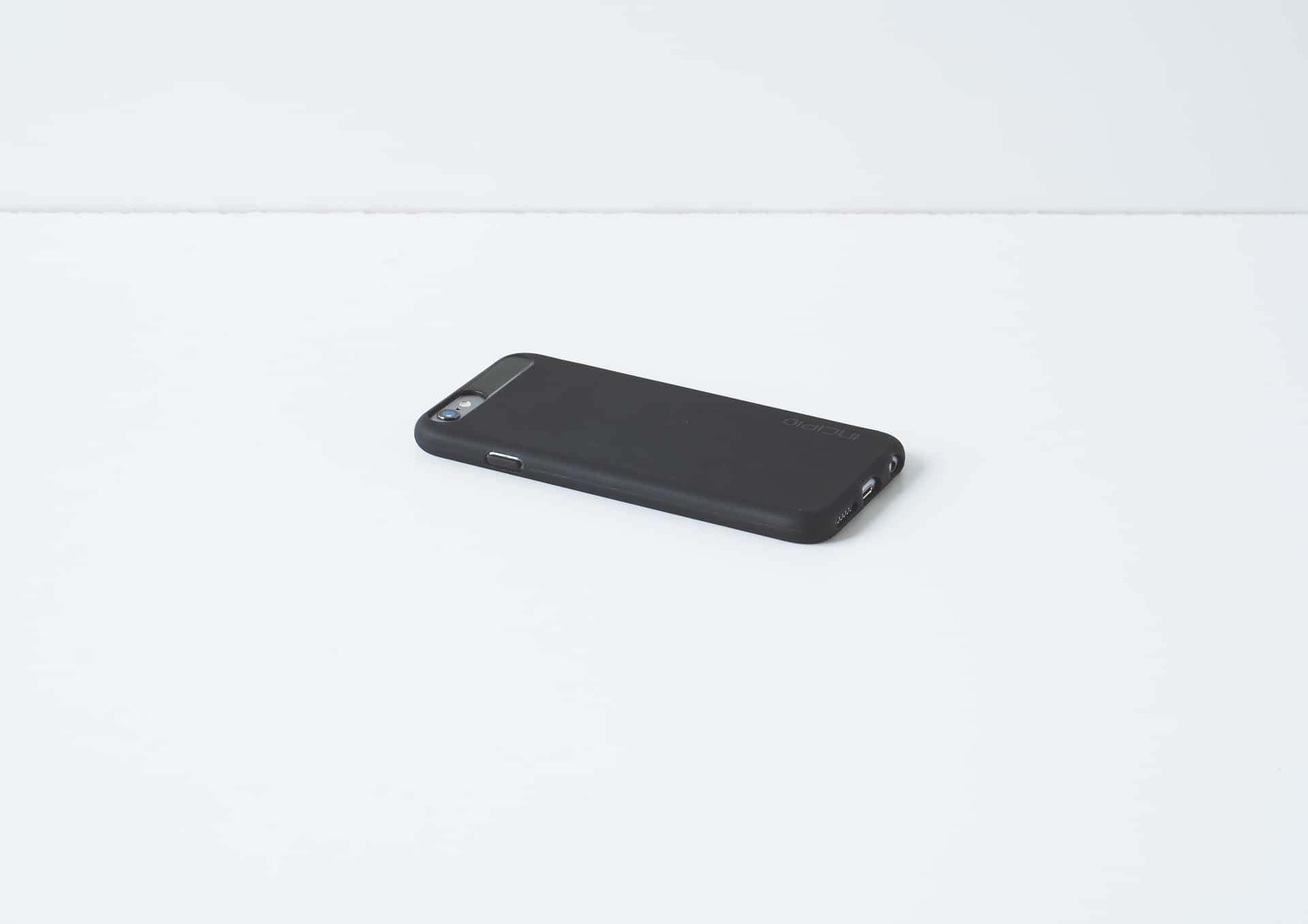
Beyond these observations, there is little more to say. The Incipio NGP isn’t a fancy case, instead opting to be a no frills case for everyday life. It has little personality in terms of color and flash, but nicely hides your iPhone in a secure, protective case within a slim case body. Fortunately, it doesn’t hit your pocketbook too hard either — at $11, you get great value from the Incipio NGP case.
Spigen Perfect Fit
Spigen has burst onto the case market recently with some decent, inexpensive options. Unfortunately, I’m not a fan of Spigen’s Perfect Fit case.
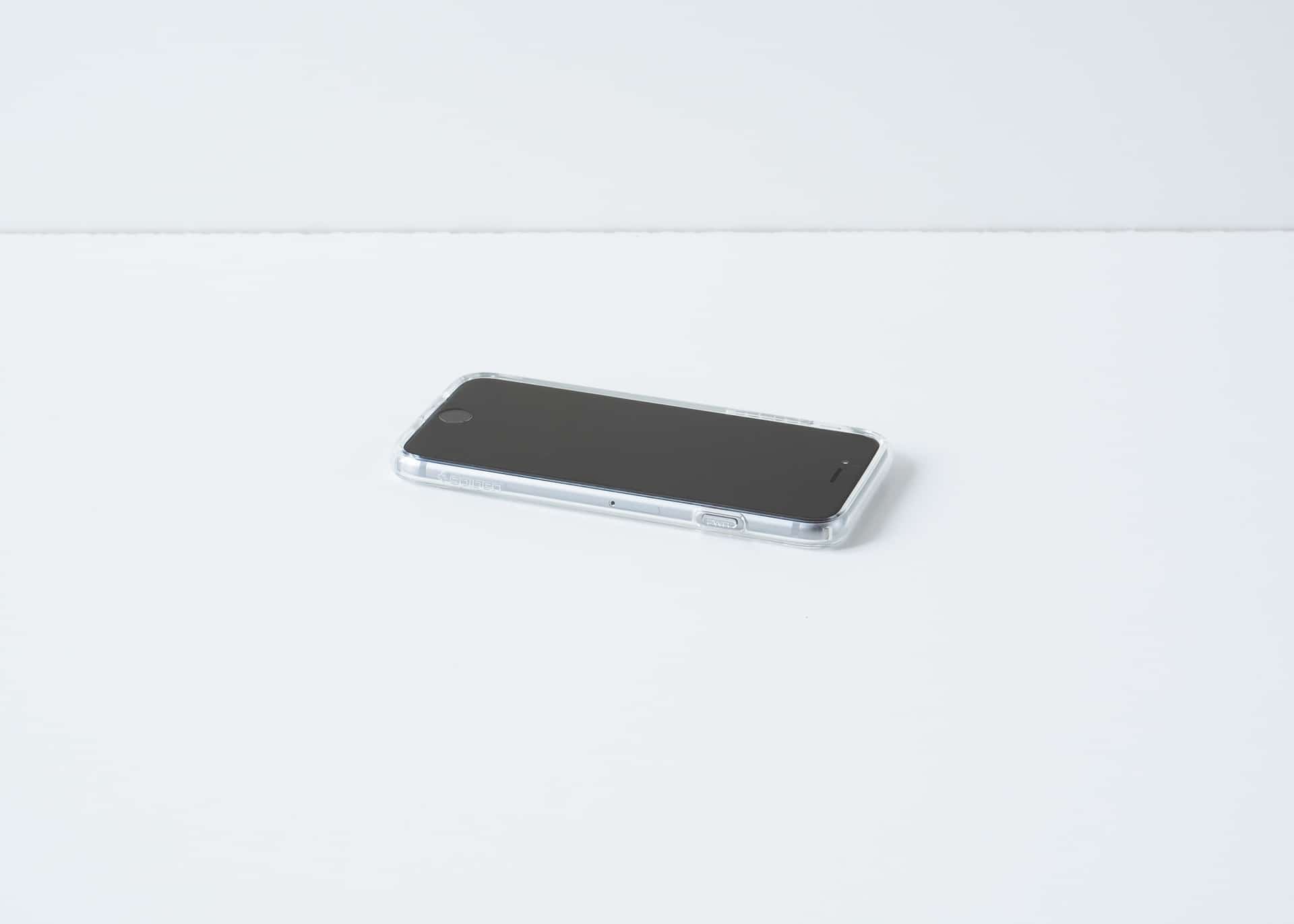
First is its feel. Instead of a rubbery feeling, the plastic just feels soft. The softness of the plastic makes it feel like you could poke through it with a sharp knife, and it’s notorious for picking up grime and fingerprints from your hands.
Second is its style. If I’m going to put a case on my phone, I’d like the case to add some flair to my iPhone. Instead, the crystal clear Perfect Fit picks up too many fingerprints to be considered stylish. If you’re going to go with the inexpensive Perfect Fit, I’d recommend the turquoise case.
Third is the case’s thickness. The Perfect Fit adds the most bulk out of all the thinner-specced cases in this list and you can notice it when holding the phone in your hand. The extra thickness does add extra protection over and above Apple’s options.

Lastly, the Spigen Perfect Fit’s buttons are mushy and not clearly marked. It’s difficult to feel whether a button has been pressed, and it’s difficult to feel your way around for the buttons when you’re not looking at your phone.
Overall, I was left underwhelmed with Spigen’s Perfect Fit case, but that doesn’t mean it’s not the right option for someone else — this case is only $15 and is an ideal first case for your new iPhone. I see this Spigen case as a “hold-me-over” case until you find the perfect case for your sense of style and everyday life.
Otterbox Commuter
It’s difficult to add Otterbox’s options into a list of general iPhone cases. It’s like comparing apples to oranges, really. Otterbox cases are designed for those rough and tough lifestyles that demand the highest levels of protection. In the case of the Commuter and Defender, Otterbox sheds thin, light, and stylish characteristics in favor of protection and durability.
The Commuter is the thinner and lighter of Otterbox’s popular cases and it would be my choice if I lived a more active life. The case comes as a two-part installation — a rubber layer holds the iPhone while the hard plastic chassis sits on the outside. The hard plastic chassis has cutouts for all the areas where the rubber extends to improve your grip on the case, or in areas where the rubber has been cut away for ports or the camera. Fitting the rubber exactly inside the hard plastic chassis is a bit of a job, but once fit, there’s little need to make any adjustments.
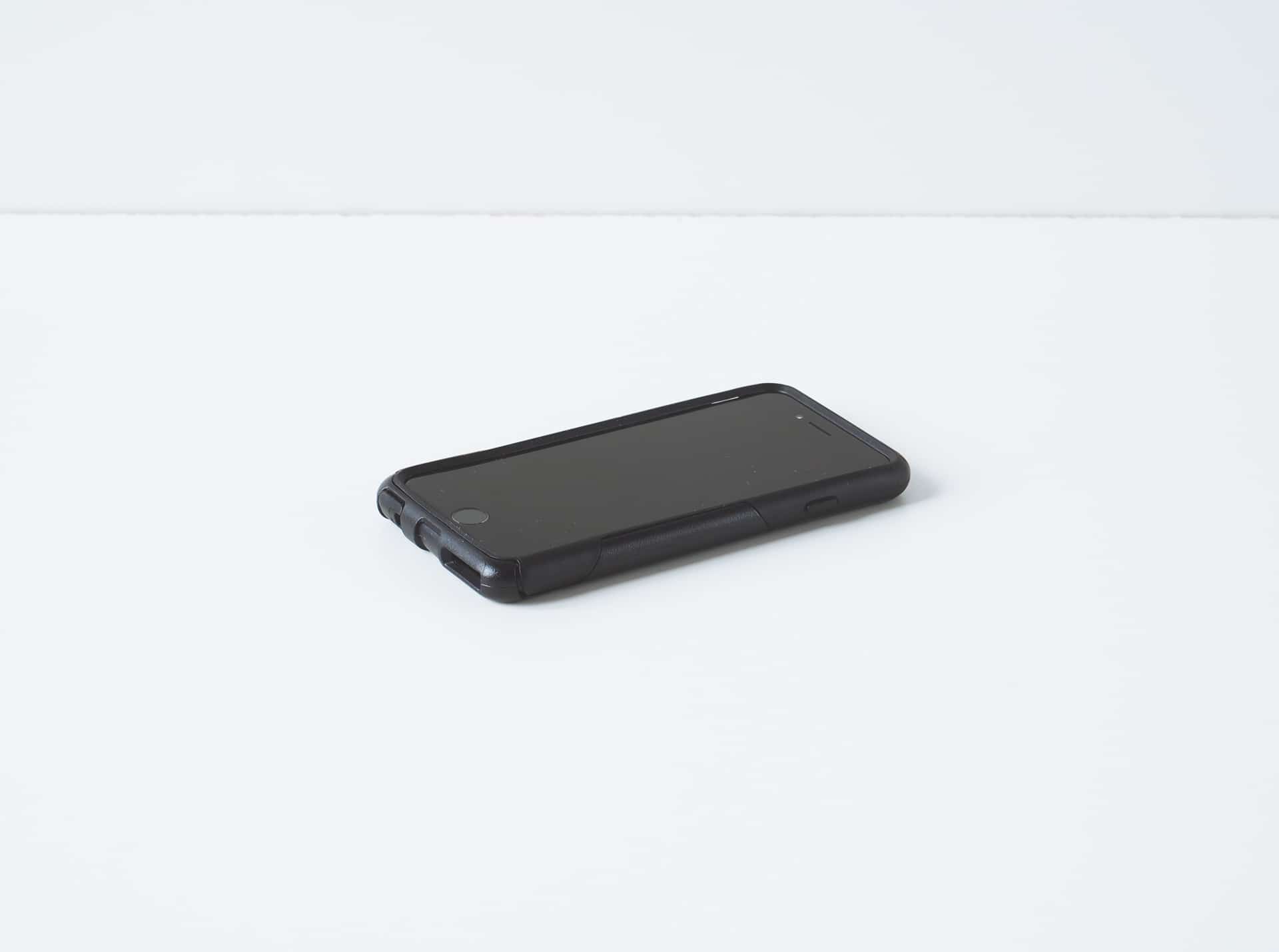
The headphone jack and Lightning port have rubber coverings, while the speaker has an open cutout like the camera and Ring/Silent switch. Feeling for the case’s buttons is very easy, with large, extra-clicky (for rubber) button markers giving lots of feedback on button presses.
Although I like the ability to see the classy Apple logo through the Commuter case, the giant circle cutout on the back of the case provides a great opportunity for sharp objects (such as keys or a pocket knife) to scratch the backside of your iPhone. Again, the cutout provides a bit of pizazz to an otherwise military-esque case, but it is the sole area where your iPhone remains vulnerable to bruises.
Unique to Otterbox cases are the included screen protectors. The screen protector for the Commuter is easily installed and sticks to the front of your iPhone with ease. I’m always hesitant when installing screen protectors, as it’s so easy to leave behind air bubbles or tiny specks of dust between the protector and the screen. Although Apple’s screens have become incredibly scratch resistant in recent years, the added screen protector makes the Commuter that much more protective.

In sum, I really like the Otterbox Commuter. It’s a nice mid-way between the ultra-protective Defender and the thinner and lighter cases found in the rest of this review. You can add some color to your Commuter by choosing different combinations on the Otterbox website, so this case even has some flair to it. From the included screen protector to the anti-shock rubber wrapping to the hard plastic chassis, this is a super protective case ready for the grinds of everyday life. Yet, somehow, it still stays relatively thin. It’s quite an impressive case for under $30.
Otterbox Defender
Lastly, the tank. The Humvee. The Otterbox Defender is the definition of protection. If this case can’t withstand a throw against a brick wall, I’m not sure what can.

From the onset, the Defender’s purpose is immediately clear. The Defender is thick and incredibly bulky, leaving only three exposed areas for the front-facing camera and ear speaker, the down-firing speaker, and a cutout for the back-facing camera. Every other piece of your iPhone is covered with the Defender — there is a built-in screen protector that even protects the Touch ID sensor, and the back circular cutout (like the Commuter) is covered with a hard, clear plastic. Although dust can get on the clear screen protector, just tapping the protector with your finger reveals how durable and protective it is. Nothing has been left behind in terms of build quality.
All ports and buttons are covered by the Defender’s outer shell. Even the Ring/Silent switch has a covering, leaving nothing extra exposed. The button coverings are part of the rubber shell that sits inside the hard outer chassis. This allows for better feedback in the buttons and eliminates any mushy feelings.
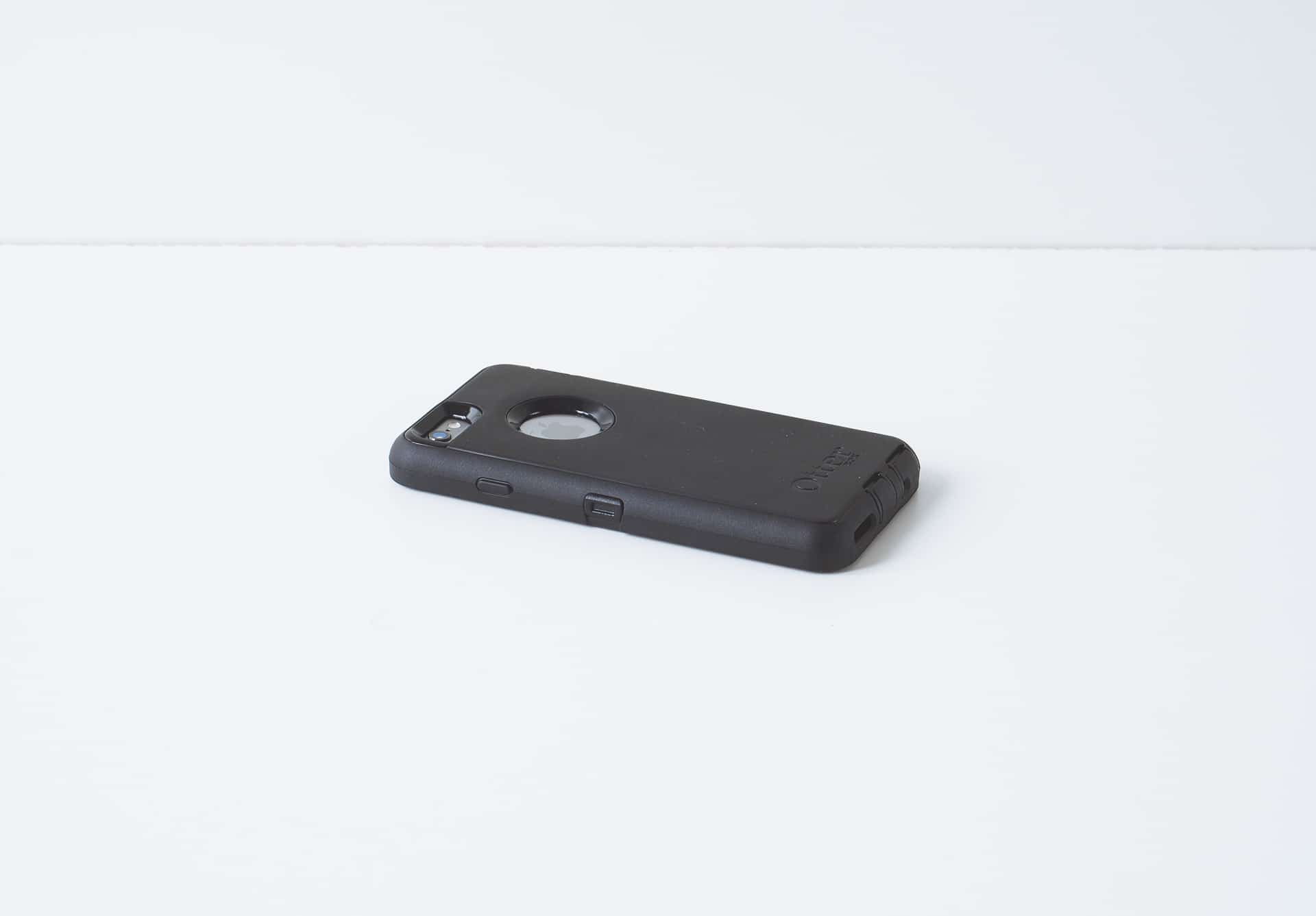
All this protection leads to the Defender’s main downside in my books: ease of installation. There was a noticeable absence of any anecdotes for the Defender in our team notes — one of the testers wasn’t able to open up the case to install it. I spent a good 10 minutes trying to remove the rubber shell from the hard plastic chassis with just my fingers, but I became extremely frustrated in the process. After that 10 minutes, I grabbed a small screwdriver and pried the hard chassis away from the rubber shell. It finally worked, but it seemed somewhat cumbersome to get to that point. Long story short: If you have the patience to use a screwdriver to pry open the case for installation, be sure you’re set on this being your one and only case. Removing it will be a task not for the faint of heart.
Unique to the Defender is a rugged holster that can clip to your belt buckle or shoulder strap. The Defender case clips into the holster beautifully and allows your phone to rest outside your pocket. If you’re working on a job site and loud machinery is at work, the holster allows for the iPhone’s speaker to play without being muffled by your jeans pocket. And better yet, the accessibility this provides is second to none. Simply unclip your iPhone from your hip and off you go.
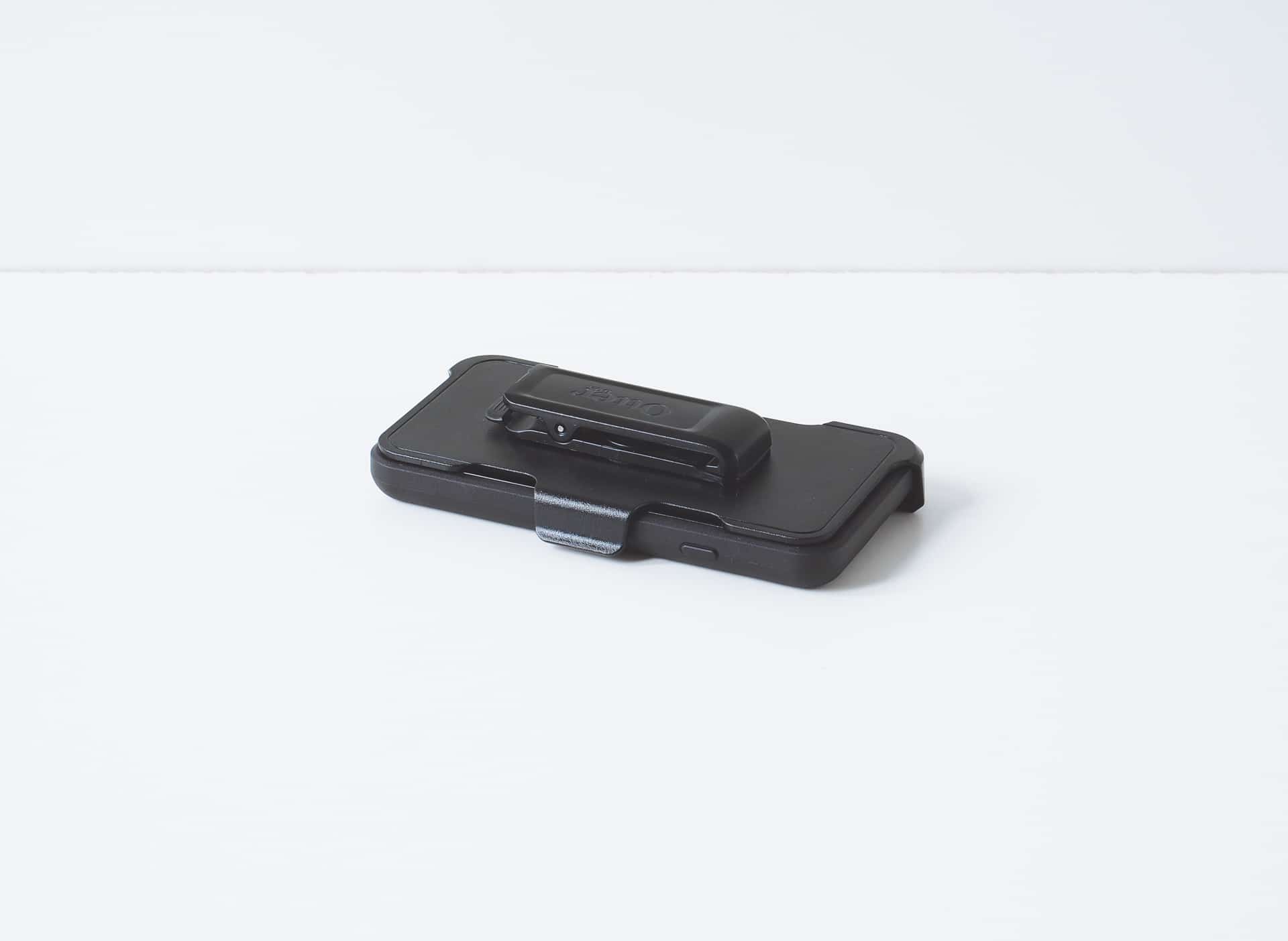
The Otterbox Defender is clearly made with a specific person in mind. I imagine construction workers, contractors, or tradespeople to be drawn to the protectiveness of the Defender series. It’s a thick, bulky case ready for any hardship you can throw at it, and doesn’t look to impress anyone looking for a flashy addition to their personal style. The Defender is easily the most protective case in this review and is a definite recommendation if you need its rugged abilities.
In Conclusion
All in all, choosing an iPhone case can be tricky. Every case above has its own strengths and weaknesses, including Apple’s own Silicone and Leather cases. Fortunately, Apple’s Silicone and Leather cases are made directly by Apple and for Apple’s iPhone, meaning both cases are finely tuned to how an iPhone is generally used. They are a bit more expensive than some of the other options on this list, but they meet all of my criteria when looking for a case. Between style, thinness, feel, material, price, and ease of installation, the Apple Silicone Case is our pick for the best iPhone 6S case for most people.
That said, if protectiveness is key, any of Otterbox’s offerings will suit you quite nicely.
If you’re looking for a fantastic option for one of the least expensive prices, the Incipio Feather Case is also a great choice.
And if you’re looking for something “barely-there,” the Caudabe Skin Case is a great choice for keeping random scratches away from your iPhone and adding a bit of grip.

